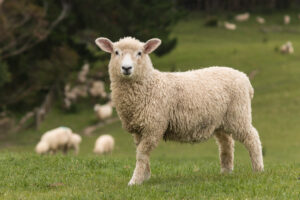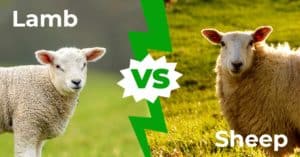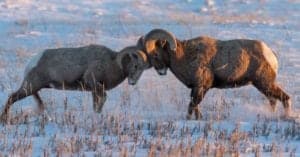With rising prices of food and goods, the desire to create a more sustainable life at home is increasing each day. Homesteading, or the desire to create a self-sufficient lifestyle, is becoming increasingly popular with each passing year. According to the Homesteaders of America, since 2020 there has been a major increase in the homesteading community. More people are growing their vegetables, making their products, and keeping animals. One of those animals that is gaining popularity is sheep. In this article, we are going to cover all things sheep prices and what it truly takes to own some.
What Is a Sheep, Anyway?
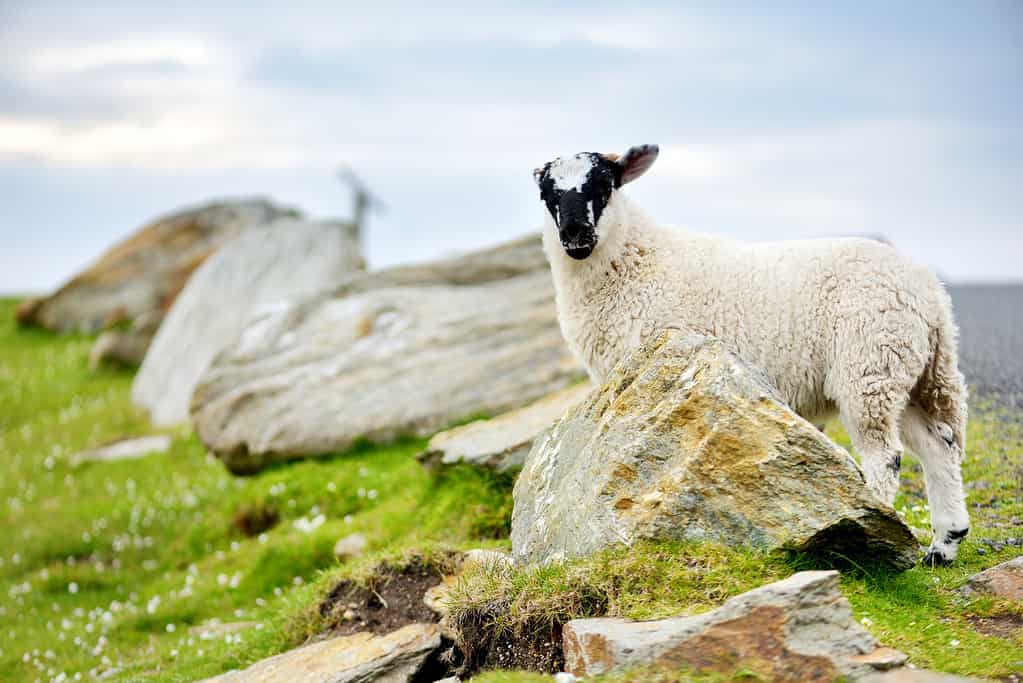
Sheep are one of the most popular livestock animals in existence.
©MNStudio/iStock via Getty Images
Sheep (Ovis aries) were one of the first and most successful domesticated species in the world. This animal is a stocky-hooved mammal with four legs, thick torsos, and short tails. Sheep are raised all over the world for meat, milk, and wool production. Additionally, they can be raised for cultural and religious reasons.
Sheep Prices by Breed
As such a popular livestock animal, there are over 200 breeds of domesticated sheep. We discuss some of the most popular breeds in the United States and their respective costs below.
Merino Wool Sheep

The Merino sheep is a domesticated breed of sheep that is characterized by its fine, soft wool.
©raymond orton/Shutterstock.com
Estimated Average Price Per Sheep: $60- $250
These sheep can be found in various locations, including in the U.S. This variety accounts for about 50 percent of the world’s sheep population so it is a very popular choice. This sheep has fine and soft, high-quality wool and a protective and adaptable nature. These sheep are typically smaller than breeds that are used for meat.
Rambouillet Sheep
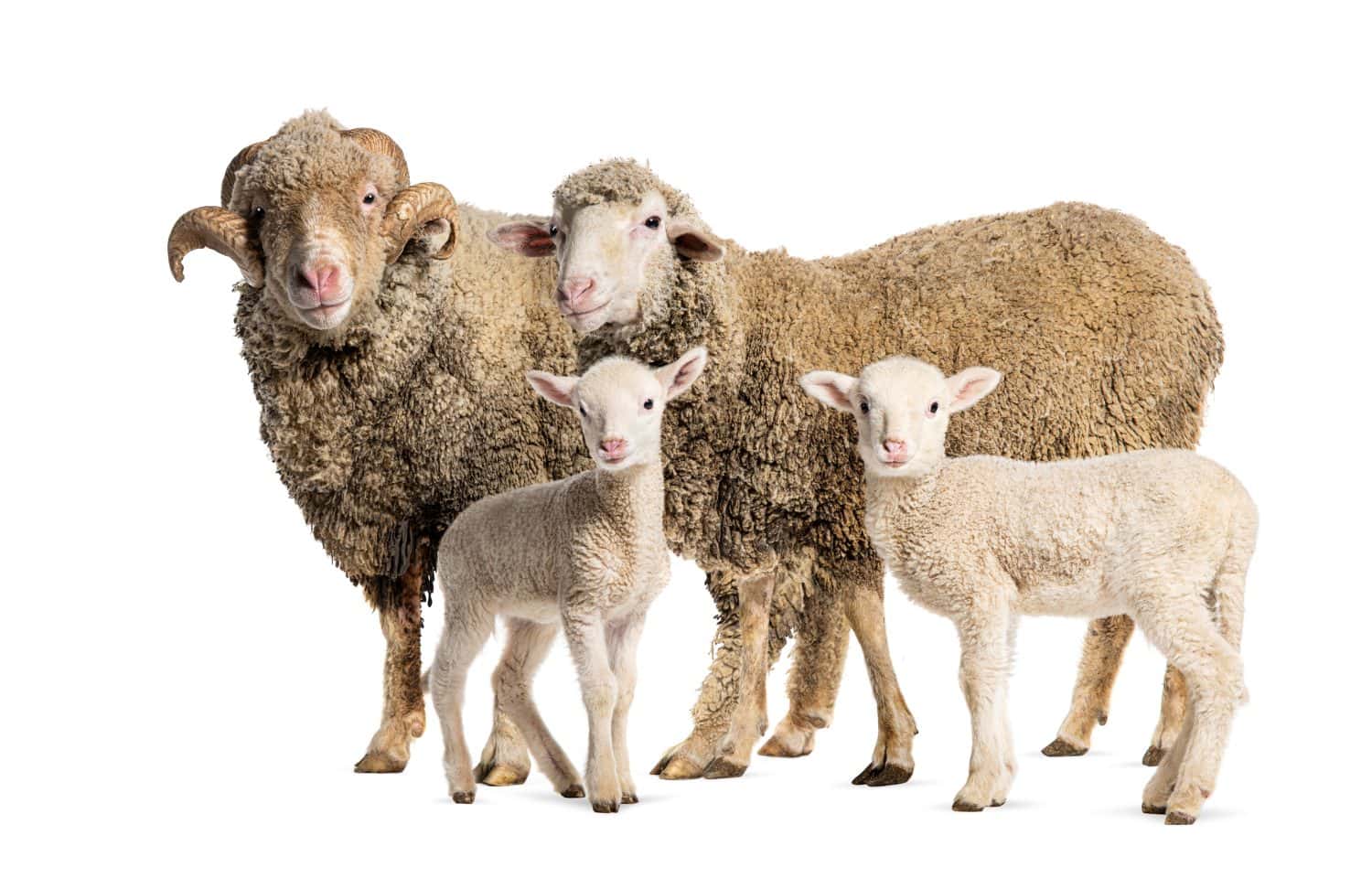
This breed is raised with a triple purpose; for meat, milk, and wool.
©Eric Isselee/Shutterstock.com
Estimated Average Price Per Sheep: $150- $500
This breed is the most popular of the commercial sheep. They are sometimes called the French Merino and are a large and long-lived breed. This sheep has a strong flocking instinct and is used for both meat and wool.
Suffolk Sheep
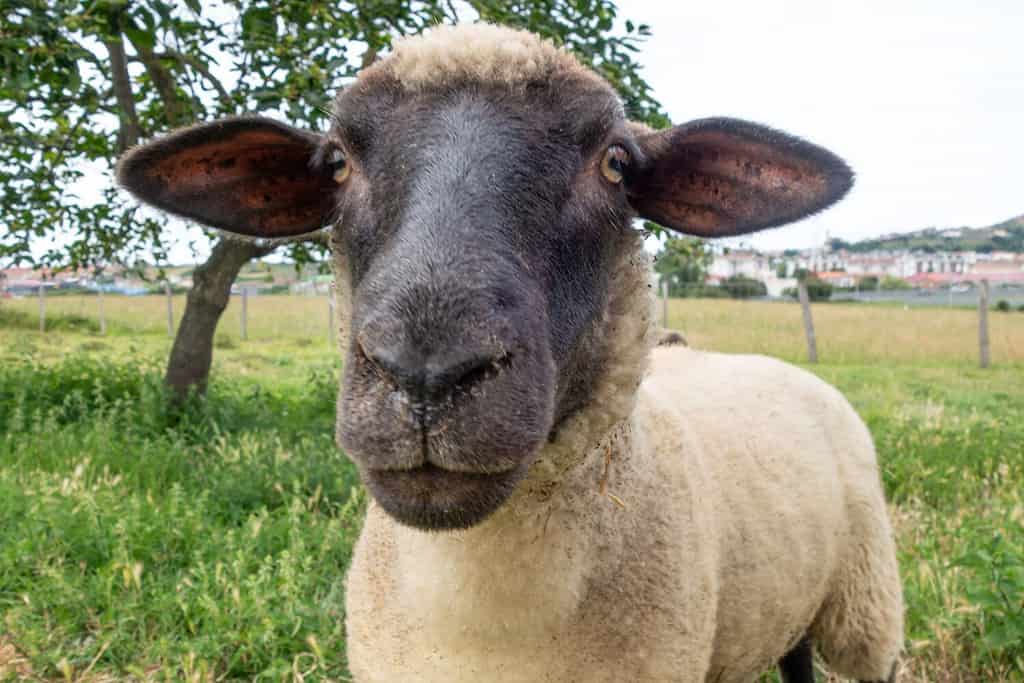
The Suffolk sheep is a result of cross-breeding and is easily distinguishable because of its black head and legs.
©ENRIQUE ALAEZ PEREZ/Shutterstock.com
Estimated Average Price Per Sheep:$100-$450
This breed is a meat or “mutton-type” sheep. It features medium wool and a unique appearance with its black head and black legs. This breed is large and fast growing and they offer good quality meat. They were first introduced to the United States in 1888.
Hampshire Sheep
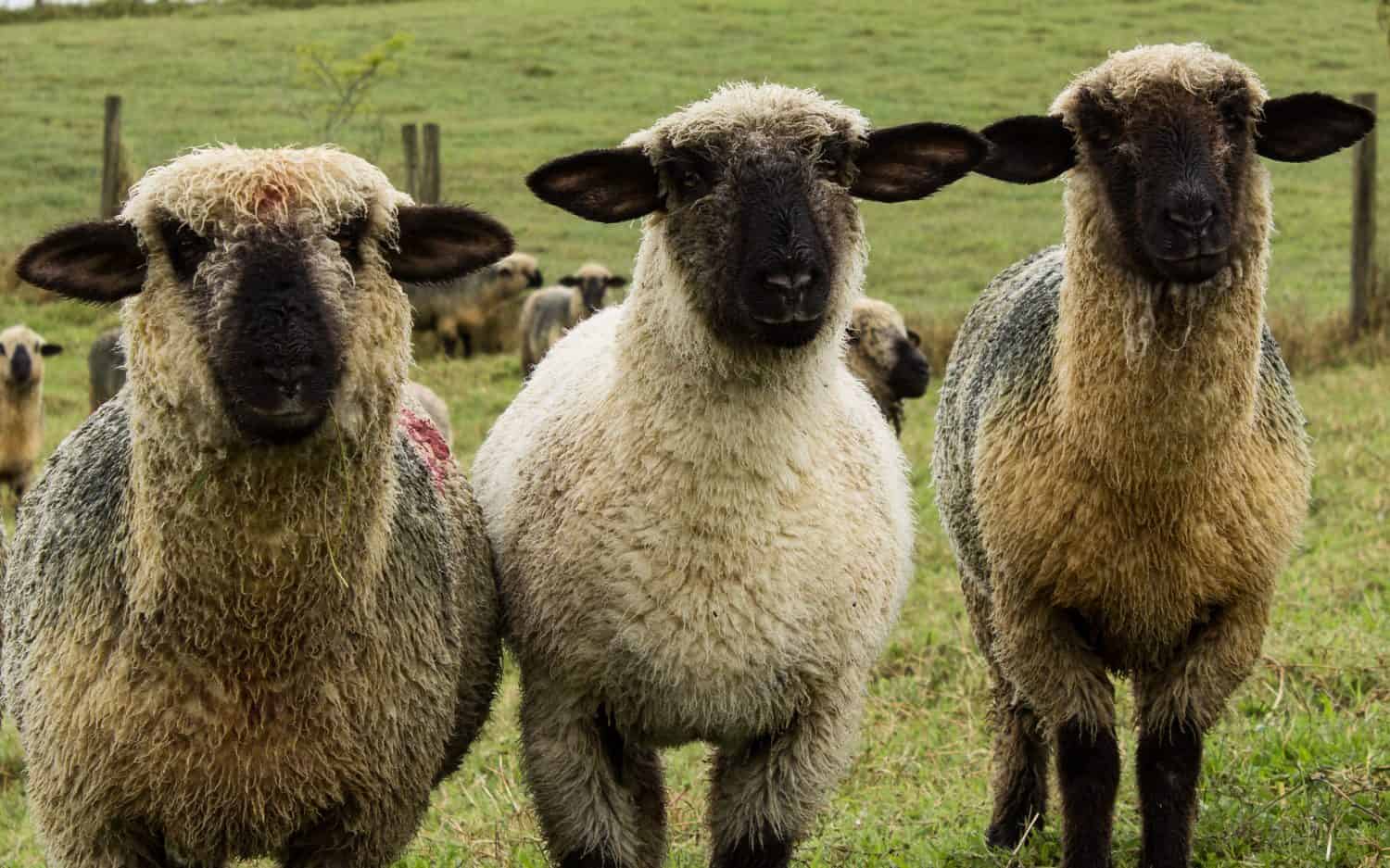
Similar in color to the Suffolk sheep, this breed can be distinguished by the wool on their heads and legs.
©Leandro Redmerski/Shutterstock.com
Estimated Average Price Per Sheep: $150- $700
This breed is also used for both wool and meat, although they are more readily used for meat production. They produce fine-quality medium wool and delicious mutton. They also have black faces and legs like the Suffolk sheep but are easily distinguishable because they have wool on their heads and legs. This breed has a mild disposition and is large and active.
Dorper Sheep
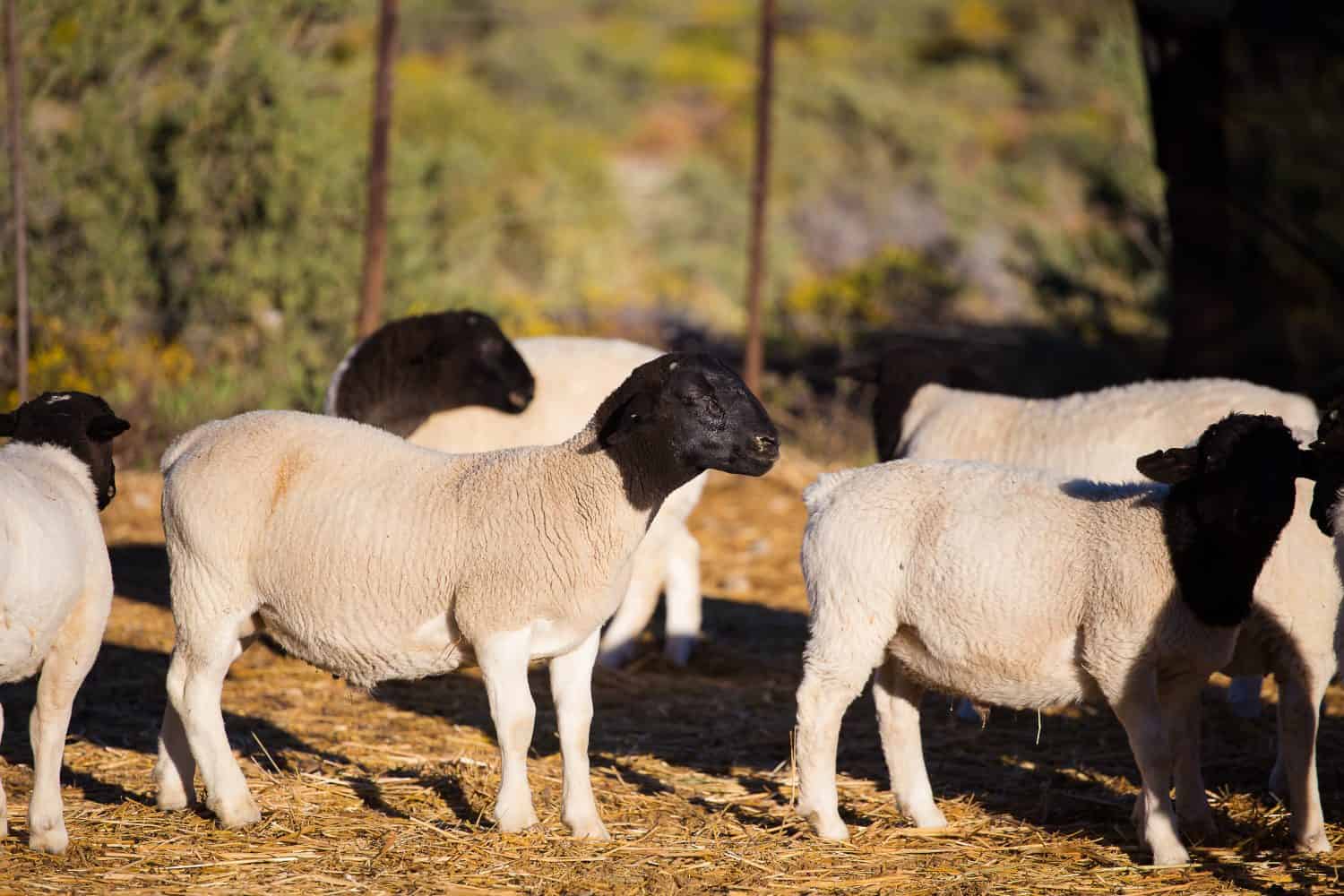
The Dorper is a South African breed of domestic sheep that was bread to be a meat sheep.
©Dewald Kirsten/Shutterstock.com
Estimated Average Price Per Sheep: $150-$400
The Dorper sheep is highly adaptable to many environments. They have a coat that is made of a mix of wool and hair. Their coat also falls off without the need to be sheared. Although they are good mutton-producing sheep, they are prized for their sheepskin because it is so thick and helps to protect against harsh weather.
Additional Factors Influencing Purchase Price
Like other livestock animals such as donkeys or pigs, there are other factors besides the breed of the animal that affect its purchase price. Some factors that influence the purchase price of the sheep are age, weight, sex, body condition, color, genetics, and place of purchase.
Age
There are different prices for different ages of sheep. For example, if a sheep is very old, it may sell for a cheaper price than a younger sheep. Additionally, sometimes lambs will cost more money than sheep. Some reasons for that are that lamb meat is in demand, and lambskin is slightly softer than sheepskin. Ultimately the price is also affected by current demands, the health of that sheep or lamb, their breed, and more.
Sex
In general, female sheep, also called ewes, are less pricey than male sheep, also called rams. For a female sheep, you can expect to pay between $300-$400. If she is going to have lambs then you can expect the price to be on the higher end. For rams, expect to pay closer to between $400-$500.
Genetics, Condition, and Coloring
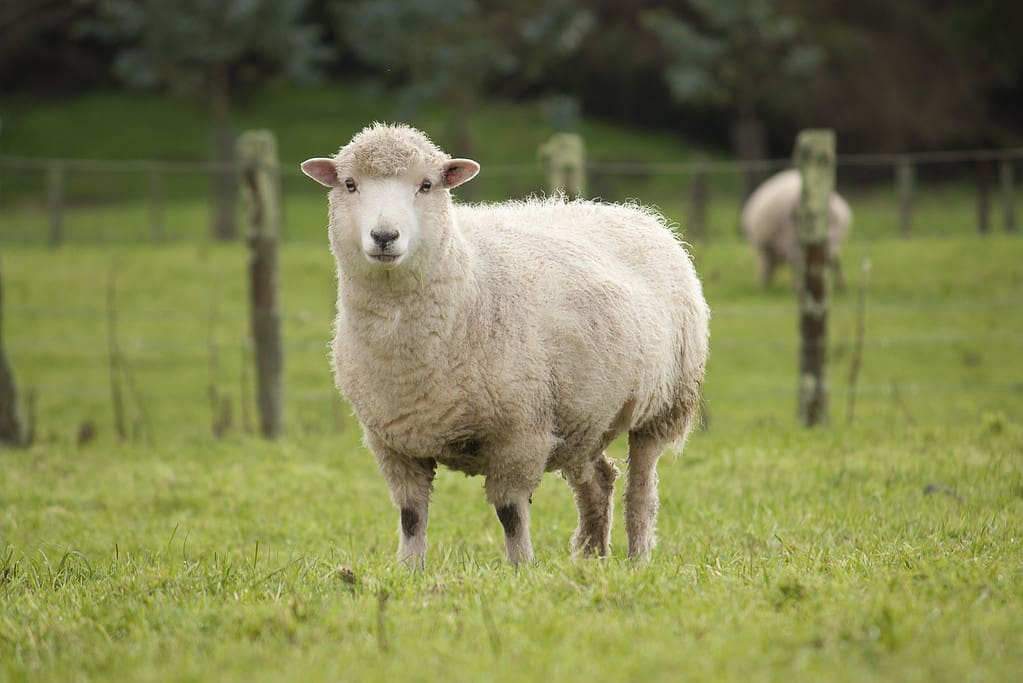
Besides breed, certain factors such as age, gender, and genetics can affect sheep prices.
©brackish_nz/iStock via Getty Images
In addition to all of the factors listed above, some other factors that can affect sheep prices are body condition, genetics, and coloring. The healthier and better shape that the sheep is in, the more it will cost. If it is purebred, registered, and comes from a good flock you are going to be paying much more than a non purebred sheep. Also, coloring affects the price by which things are in demand, cultural preferences, or which field or purpose the wool is being used for. If a sheep has an uncommon coloring, they may sell for more.
Cost of Keeping a Sheep
Purchasing your sheep is a one-time fee, owning the sheep is a continuous process that demands a continuous stream of finances. Below we break down the nitty-gritty of sheep prices as we discuss some of the typical costs of owning and keeping a sheep
Feeding Cost
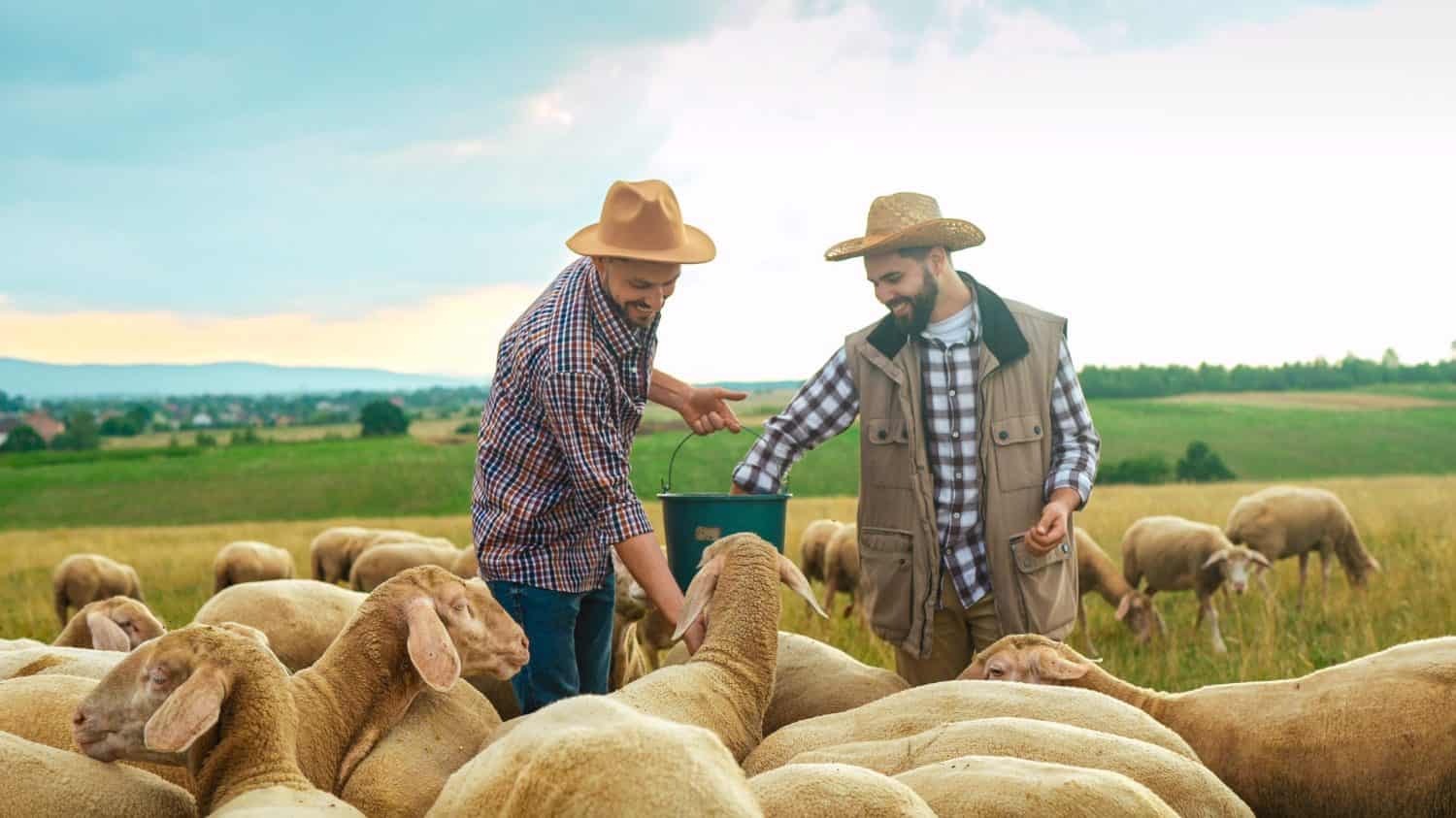
Sheep should be provided with essential minerals, high-quality grains, and an adequate amount of roughage.
©VesnaArt/Shutterstock.com
Sheep are herbivores and they are grazers. They will usually eat grass and weeds throughout their pasture. However, they require a lot more nutrition than just grass. The University of Maine did a cooperative extension of livestock and sheep best management practices. They mention how in addition to food you will need to provide minerals for the sheep’s health. Selenium is necessary and copper should be avoided.
Additionally, you will need a pasture for them to graze and high-quality forage or grains. You will also need an adequate amount of roughage, which can be hay, silage, or pasture. Finally, your sheep must have access to clean water 24/7.
Vet Care
The healthier your sheep is, the less likely you will need to call the vet. Livestock vets are typically more expensive than traditional vets. For an average 30-min visit you can expect to pay between $150 – $200. That excludes any additional medications or treatments you may need for your sheep at the time. To keep these costs down keep your sheep as healthy as possible so you only need the vet for routine check-ups and vaccinations.
Land and Shelter Costs
You want to make sure that you have enough land to house these animals and that they are provided with adequate shelter. It is recommended that you have 0.2-0.3 acres of pasture per mature animal. Although sheep have wool to keep them warm during inclement weather, it is not enough. A three-sided shelter with an open front-facing door, away from winds, will suffice. It should be built on an elevated and well-drained site. You should have 20-25 sq ft of space per mature animal.
Enclosure and Entertainment Cost
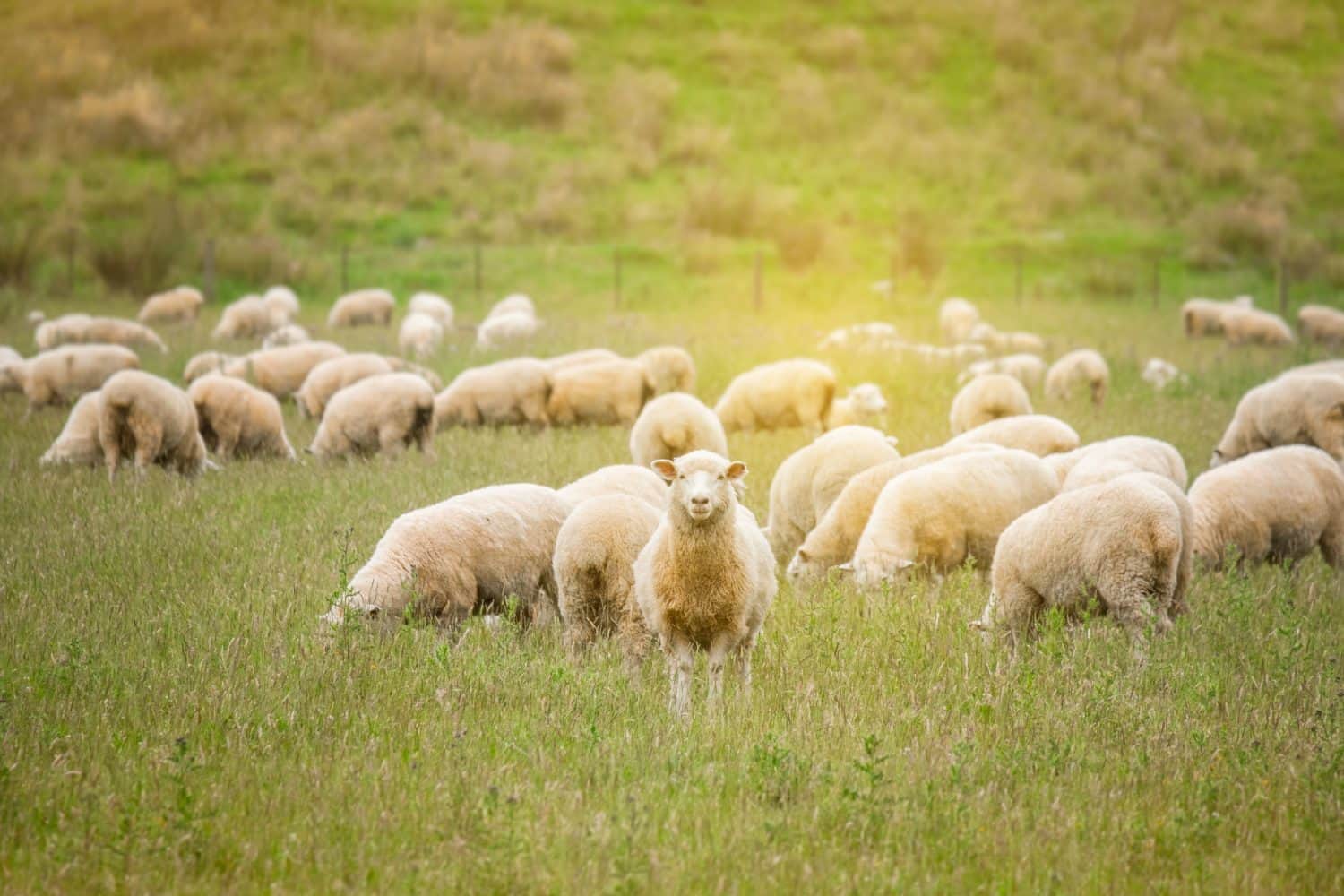
Sheep are social creatures, they must have access to other sheep.
©Klanarong Chitmung/Shutterstock.com
For their enclosures, you should have multiple paddocks in your pasture so that you can section them off. This allows you to move the sheep from paddock to paddock, allowing the grass to regrow. Additionally in their enclosure, white sheep salt blocks should always be available. There should be 50 sq ft of space in the exercise yard area per mature sheep. Additionally, there should be dry pathways for sheep to move from their enclosure or shelter areas to the pasture area safely. All areas should have adequate fencing to keep sheep in and predators out.
Also, you can help enrich your sheep by providing multiple food and water stations, mounds, bushes, etc. Furthermore, you can set up self-grooming stations for them to engage with. Finally, you can make nutritional, enrichment toys for them so they have to work to get their treats or food out of them. The cost here will depend upon how many sheep you have and how creative you want to get with their enrichment.
Additional Costs
There are plenty of other additions we could keep adding but here are just two more of the most common costs of owning a sheep.
Grooming and Insurance

It is important to clean and trim the sheep’s hooves to help prevent foot rot.
©Norman Krauss/Shutterstock.com
While sheep are considered relatively low maintenance on the livestock care scale, they still require grooming. Sheep must have their hooves trimmed once a year. Also, they should be sheared at least once a year, with some breeds needing it twice. The cost here will determine if you will be doing these grooming practices yourself or hiring a service. Additionally, livestock insurance is recommended to help protect your animals.
Recap of Estimated Costs of Purchasing and Upkeeping a Sheep
Estimated Cost of Purchasing a Sheep
Here is a table that summarizes the purchase price of a sheep based on breed. Please keep in mind these are average costs, there will be times when you can find sheep for less or more than what is mentioned below.
| Sheep Breed | Average Cost |
|---|---|
| Merino Wool Sheep | $60-$250 per sheep |
| Rambouillet Sheep | $150-$500 per sheep |
| Suffolk Sheep | $150-$450 per sheep |
| Hampshire Sheep | $150-$700 per sheep |
| Dorper Sheep | $150-$400 per sheep |
Estimated Cost of Upkeeping a Sheep
Although sheep may not be the most expensive farm animals, upkeeping them can still come at quite a cost. Below you can find a table that summarizes the average costs for the upkeep of sheep and all things sheep prices in 2024.
| Additional Cost Factor | Description | Price (if applicable) |
|---|---|---|
| Feeding Costs | – Sheep need a pasture to graze in. – Also need nutrients such as selenium. – Sheep need 24/7 access to clean water. – Should also have high-quality forage or grains. | Hay = $111.88 per ton Grain = $0.15 – $0.63 per pound Specific nutrient prices vary |
| Veterinary Care | Sheep need regular veterinary care for checkups, vaccinations, and more. | Price is dependent upon your sheep’s health and the service being provided. |
| Land and Shelter Costs | -Have 0.2-0.3 acres of pasture per sheep. – They need a three-sided shelter with an open door. -The shelter should be on elevated ground with good drainage | Will need to purchase the materials to build the shelter and to fence the land. |
| Enclosure and Entertainment Costs | – You need multiple paddocks – Sheep salt blocks should be provided – At least 50 sq ft of exercise space per sheep – Sheep are social creatures | Price is dependent on how many sheep you have. |
| Grooming | – Annual hoof trimming – Annual shearing | It is either the cost of tools and sanitation equipment or the cost of the service. |
| Insurance | Advised to protect your livestock. | Is dependent upon which plan you select. |
The photo featured at the top of this post is © Klanarong Chitmung/Shutterstock.com
Thank you for reading! Have some feedback for us? Contact the AZ Animals editorial team.



